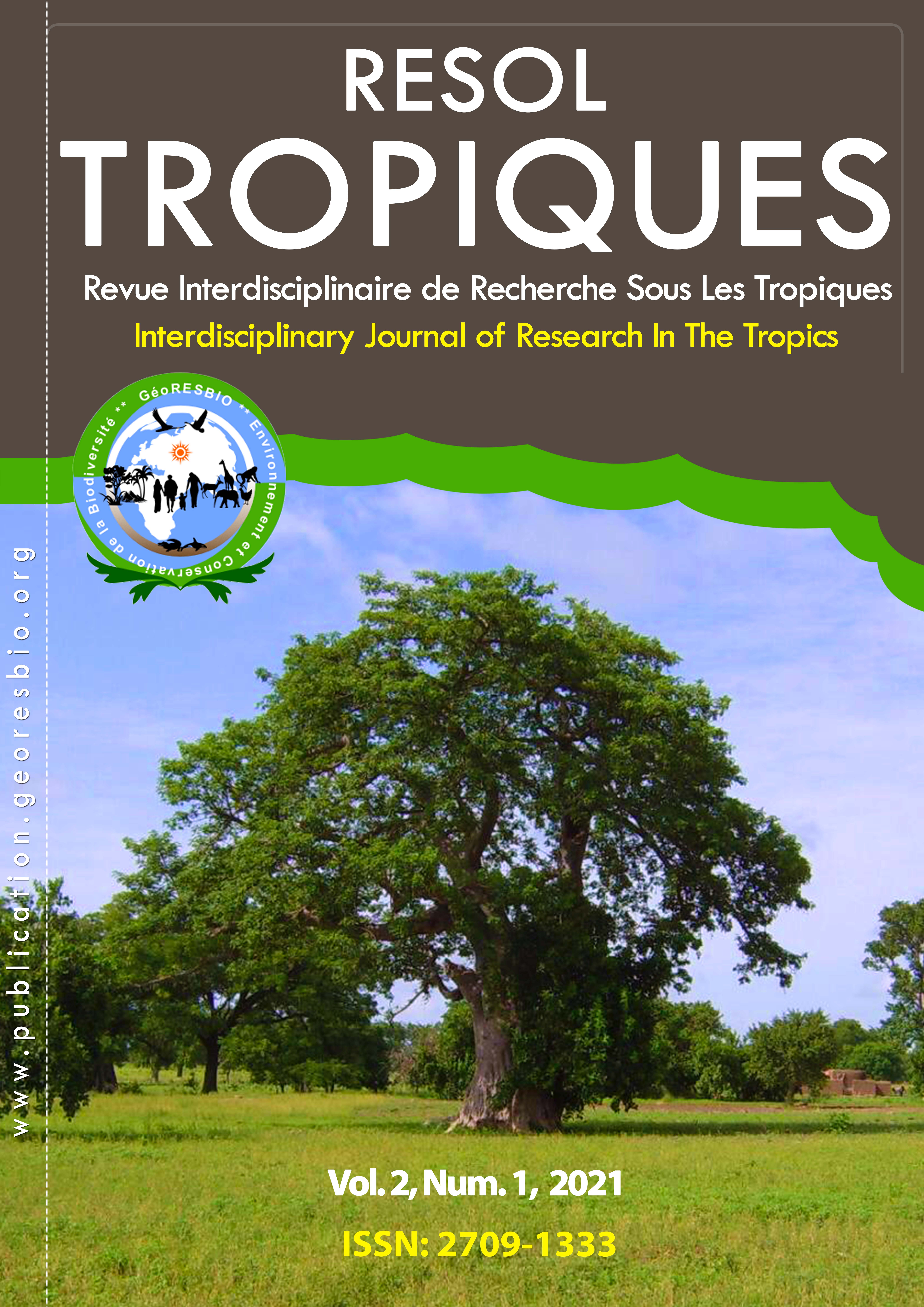Prevision of the climatic drought impact on the geographical area of cocoa tree in Côte d’Ivoire
Hauptsächlicher Artikelinhalt
Abstract
In the context of climatic variations, the evolution of drought is likely to have an impact on the geographical area of plant species, particularly the cocoa tree. For a good adaptation of the plant to drought, it is necessary to have a better knowledge of its current and future evolution on its cultivated areas. The objective of this study is to analyse the current and future impact of climatic drought on the geographical area of the cocoa tree in Côte d'Ivoire. To do so, the Standardised Precipitation Index (SPI) and De Martonne Aridity Index were applied to monthly rainfall and temperature data from 1960 to 2017 and to simulation data from the MIROC-ESM model for the years 2030, 2050 and 2080, under the RCP 4.5 and RCP 8.5 scenarios. The results reveal the persistence of climatic drought in all cocoa-producing areas with a predominance of moderate and severe droughts despite some wet years. The years 1986, 1998 and 2015 were the driest in the entire period analysed. The current geographical area favourable to cocoa trees corresponds to all the production areas of the country. However, cocoa trees in the eastern and central-eastern localities remained very sensitive to drought and are already facing adaptation problems. The MIROC-ESM model predicts whatever scenario is used, for the horizon of 2030, 2050 and 2080, a reduction in the geographical area of the cocoa tree. Therefore, if effective adaptation measures are not put in place, cocoa development may be seriously disrupted by drought by 2080.
Artikel-Details

Dieses Werk steht unter der Lizenz Creative Commons Namensnennung 4.0 International.
Alle im Resol-Tropiques Journal veröffentlichten Artikel oder sonstigen wissenschaftlichen Beiträge werden unter den Bedingungen der internationalen Creative-Commons-Lizenz 4.0 verbreitet, die die Nutzung, Verbreitung und Vervielfältigung ohne Einschränkung der Unterstützung erlaubt, vorausgesetzt, Sie nennen den Namen des/der Originalautors/Autoren und die Quelle, geben einen Link zur Creative-Commons-Lizenz an und geben an, ob Änderungen vorgenommen wurden. Der Creative Commons Public Domain Disclaimer gilt für die in diesem Artikel zur Verfügung gestellten Daten, sofern nicht anders angegeben.

